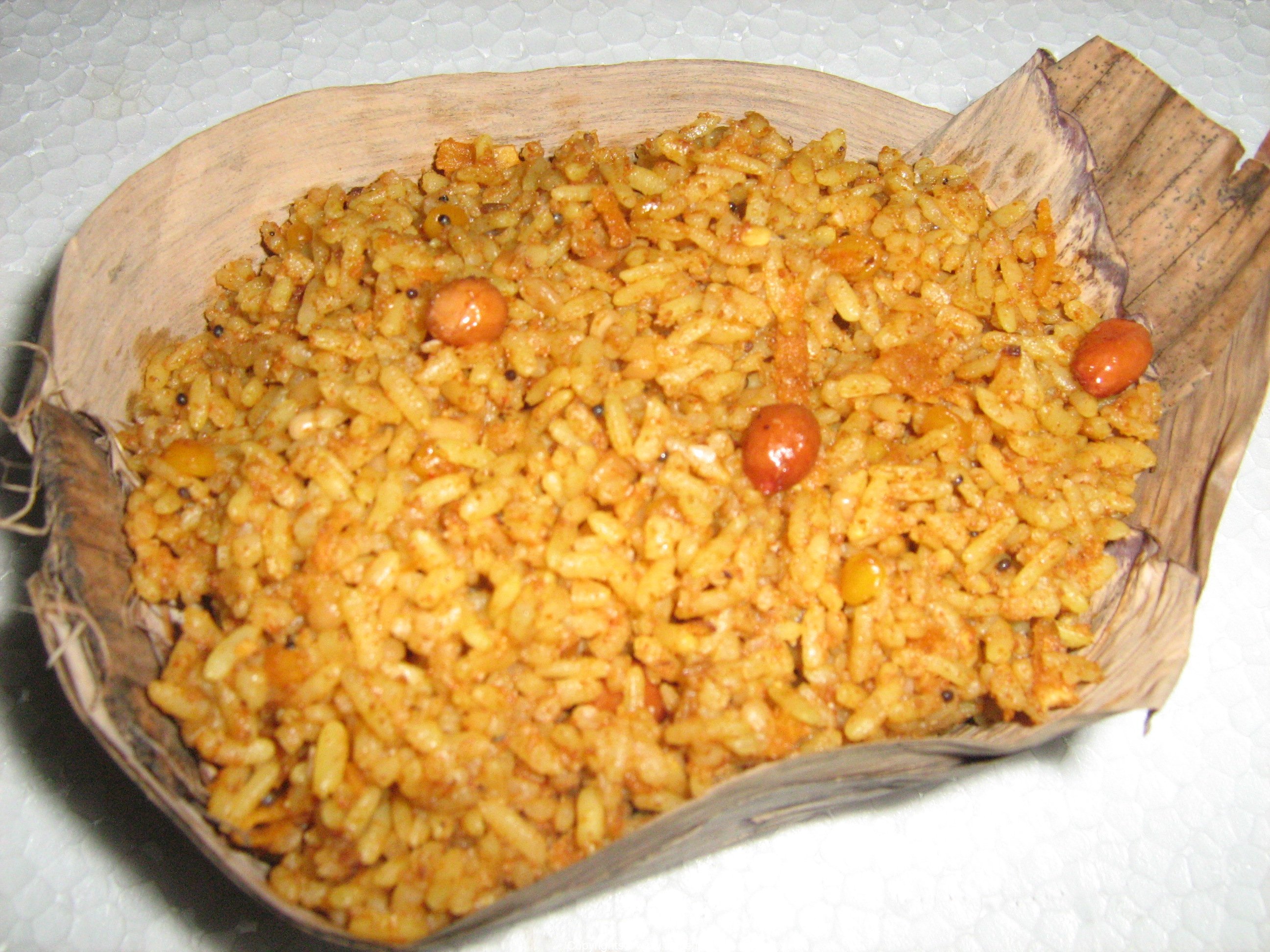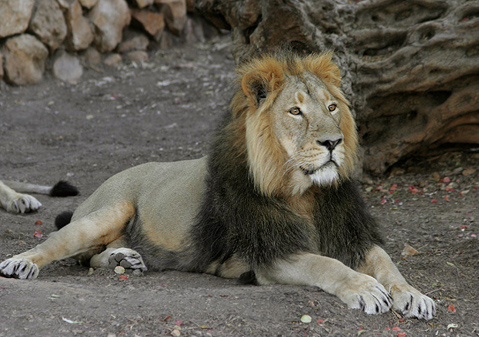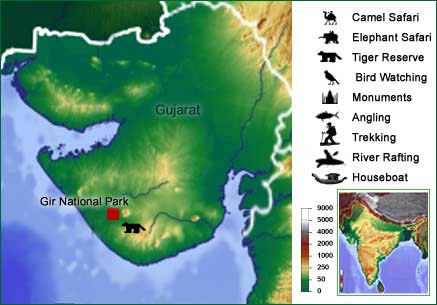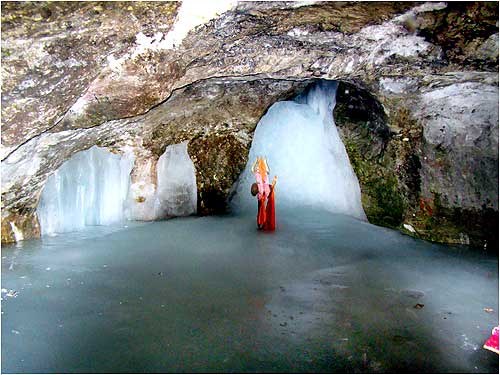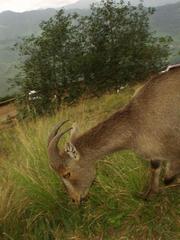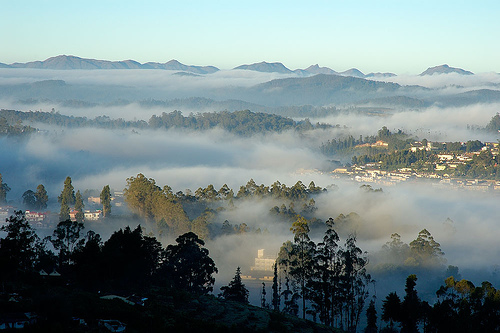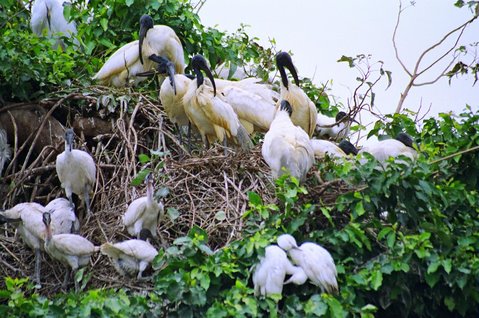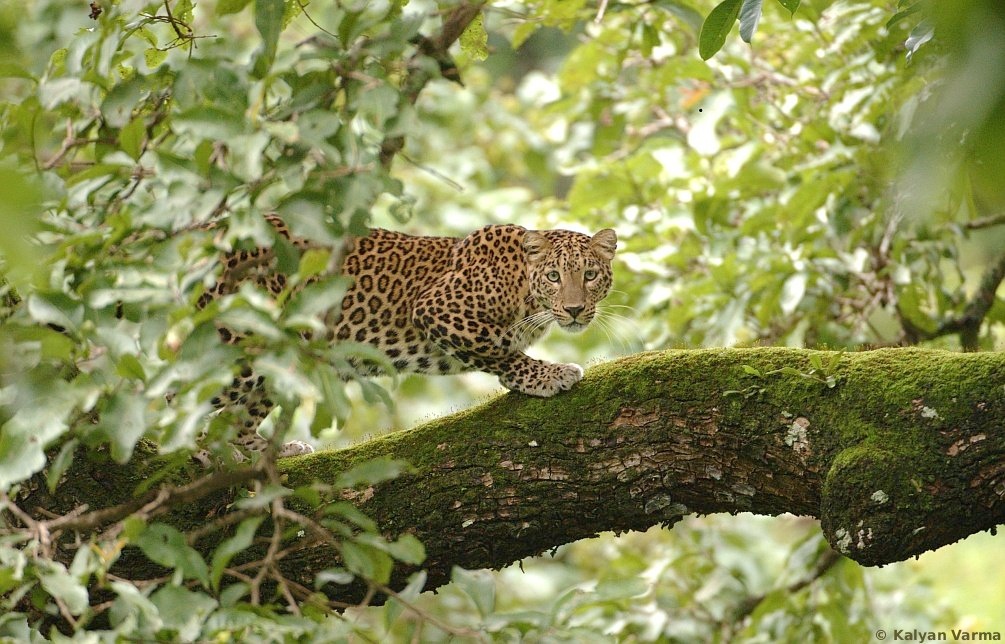Glitzz india travel guides
At Glitzindia Travels we provide you all type of travel related services. We have strong Associations with leading hotels across the country, enables us to give our clients their best value for money. This trait of our, makes us the most attractive tour and travel agency for you. We are prompt in our replies to your queries, and this has earned us a reputation as one of the best and most efficient tour and travel operators in India by both our clients and our overseas partners.
Glitzz india Offers the Following Tours :
Cultural Tours in India:
Cultural Tours
Heritage Tours
Forts & Palace Tours
Fairs and Festival Tours
Adventure Tours in India
Trekking in Himalayas
Mountaineering Expeditions
Camel Safaris
Cycling Tours
River Rafting Trips
High Altitude Jeep Safaris
Bike Tours
Special Interest Journeys in India
Wild Life Tours
Archeological Tours
Tribal Tours
Photography Tours
Culinary Tours
Enlightenment Journeys in India
Ayurvedic Tours
Spa
Ayurvedic Treatments
Stress Busting Treatments
Religious Tours
Yoga & Meditation Tours | Yoga Classes ( With natural Environments)
Pilgrimage & Spiritual Tours
Recreation Holidays in India
Beach Tours
Mountain Tours
Hill Station Tours
Now you can have a comfortable and hassle free Holiday in India where in you leave all the worries to us. Right from the arrival at the airport to personalised assistance of departure, we take care of all the needs of the travellers. Our guests just sit back & enjoy their holidays with all the value for the money they have spent.
We provide :
Personalised assistance on arrival & departure.
All sorts of transfer from car to coach in any city in India.
Accommodation in all category of hotels from budget to 5 Star hotels all over India.
Multilingual guide services.
Escort services.
Air, train and bus tickets.
Sight seeing in comfortable chauffer driver cars to coaches.
Special cultural theme events if any.
24 * 7 Personal care taken from us towards our clients.
For any queries can always feel free to contact us:
Call: +91-9739920428
Mail: manju.198928@gmail.com
Places to visit in Melukote near mysore, karnataka, india
The entire Melukote is occupied with so many visiting places including temples and ponds. Sri Yoganarasimha Swamy temple islocated at the top of the hill. People can climb the steps from the ground level or they can take their vehicles (only light motor vehicles) almost nearer to the temple. But still some more steps are to be climbed to reach the temple. The pooja timings at Yoganarasimha temple are, 9.00 to 10.00am (Nithyakatle). Abhisheka will be done from 10.00 to 11.00am and darshan will be from 11.00am to 1.00pm. Evening darshan is from 5.30pm to 8.00pm. During Saturdays, Sundays and public holidays, the darshan will be from 11.00am to 2.00pm and 5.00pm to 8.00pm. Photography is strictly prohibited inside the temple but people can carry their cameras along with them.
Sri Cheluvanarayana swamy temple is located at the centre of Melukote. Before visiting Sri Cheluvanarayana Swamy temple, people can visit the Pancha Kalyani pond. The pond is very big with mantaps, Bhuvaneshwari mantap is located here. The puja timings for Cheluvanarayana Swamy temple are, 8.30am to 12.30pm, 4.00pm to 6.00pm and 7.00pm to 8.30pm. During Saturdays and Sundays, the morning puja timings will be from 8.30am to 1.30pm. Inside the Cheluvanarayana swamy temple the pillars are carved beautifully. Photography is strictly prohibited inside the temple. There is no place to keep the items so people can carry the cameras along with them. Behind this temple, the sisters ponds (elder and younger sisters, Akka-Tangi kola) are located. Proceeding further there is Roya Gopuram which is a scenic place and people can see the aerial view of the surroundings. Sisters pond and other parts also look very beautiful. Other important places are Sri Yadugiri Ammanavara Sannidhi and Dhanushkoti
Very good Vegetarian food is available everywhere here. Parking facilities is available nearby in almost all the visiting places for Light motor vehicles. The main transportation to Melukote is by bus from Mandya, K.R.Pet, Nagamangala and Pandavapura (or Srirangapatna).
places to visit near mysore, karnataka,INDIA - melukote
Melukote, a religious and a pilgrim centre for Hindus, is located in Mandya district of Karnataka state in India. This place is very well known for various famous temples and a festival called Vairamudi takes place here when devotees come from all parts of India.
Paalleo Melukote Cheluvaraya
As soon as we get down in this sthalam, the first thing we see is the Kalyani theertham. Only in this theertham, Yathu Vamsa rajan took bath daily and worshipped the deities of the temple. This theertham is found in the foothill of the temple and the theertham is so clear that it looks like silver. On one among the sides of this theertham, a separate Sannadhi for Sri Varaha perumal is found and he gives the seva as he was explaining the slokam to Bhooma Devi.
East-west Traditions: Ethical and Philosophical Perspectives
On the Northwest side of the theertham, Sannadhi for Periya Thiruvadi - Sri Garudalwar is found. It is said that he stores the Thiru - Mann (a sacred mark of Sri Vaishnavites which they smear on the fore head) Kaappu. There is a story about this and it is that when Sri Ramanujar was leading his life in this sthalam, one day he could not get the Thiru Mann to get smeared. On that night in his dream, Emperumaan came and explained that he can get the Thiru Mann in the place where Sri Garudalwar is found now. And as said by the perumal, Sri Ramanujar went to that place and got the Thiru Mann.
Melukote Sri Cheluvaraya
Thirunarayanapuram - MelkottaiIn the Vaayu end, a separate Sannadhi for Yadhugiri Nachiyar is found. Previously, it is said that the Thaayar was giving her seva Ugra Kolam but after then, the perumal in Garudan gave her the seva as "Gajendra Varadhan" and reduced her Ugram (angry) and from then, the Thaayar gave her seva as "Sowmyanayaki". A separate Sannadhi for Sri Narasimhar is also found in this sthalam and by getting the dharshan of this Narasimhar it is very much evident we can get all the wealth, health what we lost
list of TVS motor cycles
* Ind Suzuki AX 100
* TVS MAX 100
* TVS MAX R 100
* TVS Supra
* TVS Fiero
* TVS Scooty ES (60cc)
* TVS Scooty KS (60 cc)
* TVS Scooty Pep (75 cc)
* TVS Scooty Pep Plus (90 cc)
* TVS Teenz
* TVS Star
* TVS Eco
* TVS Astra
* TVS Champ (60 cc)
* TVS Super Champ (60 cc)
* TVS XL Super (60 cc)
* TVS XL Super Heavy Duty
* TVS Star City
* TVS Star Sport
* TVS Fiero F2
* TVS Fiero FX
* TVS Centra
* Suzuki Samurai
* Suzuki Shogun
* Suzuki Shaolin
* Suzuki Fiero
* TVS Victor (110 cc)
* TVS Victor GLX (125 cc)
* TVS Victor EDGE (125 cc)
* TVS Flame (125 cc,ccvti technology)
* TVS Apache (150 cc,13.7 Ps @8500rpm)
* TVS Apache RTR 160
* TVS Apache RTR 160 EFI
* TVS Flame
* TVS Teenz Electric
* TVS NEO 110
* TVS XL 50(50 cc)
* TVS XL (60 cc)
list of hero honda moto cycles
- Hero Honda CD 100
- Hero Honda CD 100 SS
- Hero Honda Joy
- Hero Honda Street
- Hero Honda Karizma
- Hero Honda Hunk
- Hero Honda Pleasure
- Hero Honda CBZ
- Hero Honda CBZ Xtreme
- Hero Honda Passion
- Hero Honda Passion Plus
- Hero Honda CD Dawn
- Hero Honda Splendor
- Hero Honda Splendor Plus
- Hero Honda Super Splendor
- Hero Honda CD Dawn
- Hero Honda Passion Pro
- Hero Honda Glamour
List of Bajaj MotorCycles(Bikes)
- Bajaj Chetak
- Bajaj Super
- Bajaj M-50
- Bajaj M-80, Kawasaki Bajaj KB100
- Bajaj Sunny
- Kawasaki Bajaj 4S Champion
- Bajaj Bajaj Classic
- Bajaj Super Excel
- Kawasaki Bajaj Boxer,
- Kawasaki Bajaj Caliber
- Bajaj Legend
- Bajaj Spirit
- Bajaj Saffire
- Eliminator
- Bajaj Pulsar
- Caliber115, Bajaj Wind 125, Bajaj Pulsar
- Bajaj CT 100
- Bajaj Discover DTS-i
- Bajaj Wave
- Bajaj Avenger
- Bajaj Discover
- Bajaj Platina
- Bajaj Pulsar-200
- Bajaj Kristal
- Bajaj Pulsar 220 DTS-Fi
- Bajaj XCD 125 DTS-Si
- Bajaj Discover 135 DTS-i - sport
- Bajaj XCD-135cc launched
a motorcycles zone and motor bicycle
A motorcycle which is also called as a motorbicycle, motorbike, bike, is a single-track, two-wheeled motor vehicle powered by an engine. More than 75% of India's total exports in the two wheeler automobile industry are made in the motorcycle segment. Motorcycles vary considerably depending on the task for which they are designed, such as long distance travel, navigating congested urban traffic, cruising, sport and racing, or off-road conditions.
Yakima Super Joe 2-Bike Trunk Mount Rack
The Nine Rasas
| |
bollywood awards
As the Filmfare, the National Film Awards were introduced in 1954. Since 1973, the Indian government has sponsored the National Film Awards, awarded by the government run Directorate of Film Festivals (DFF). The DFF screens not only Bollywood films, but films from all the other regional movie industries and independent/art films. These awards are handed out at an annual ceremony presided over by the President of India. Under this system, in contrast to the National Film Awards, which are decided by a panel appointed by Indian Government, the Filmfare Awards are voted for by both the public and a committee of experts.
Filmfare Awards: The Times Group, Bollywood, National Film Awards, The Times of India, Cinema of India, Filmfare Awards South, Academy Award
History of bollywood
The 1930s and 1940s were tumultuous times: India was buffeted by the Great Depression, World War II, the Indian independence movement, and the violence of the Partition. Most Bollywood films were unabashedly escapist, but there were also a number of filmmakers who tackled tough social issues, or used the struggle for Indian independence as a backdrop for their plots.
In 1937, Ardeshir Irani, of Alam Ara fame, made the first colour film in Hindi, Kisan Kanya. The next year, he made another colour film, Mother India. However, colour did not become a popular feature until the late 1950s. At this time, lavish romantic musicals and melodramas were the staple fare at the cinema. Successful actors included Dev Anand, Dilip Kumar and Raj Kapoor and actresses like Nargis, Meena Kumari, Nutan and Madhubala. In the late 1960s and early 1970s, romance movies and action films starred actors like Rajesh Khanna and Dharmendra. In the mid-1970s, romantic confections made way for gritty, violent films about gangsters and bandits. Amitabh Bachchan, the star known for his "angry young man" roles, rode the crest of this trend with actors like Mithun Chakraborty and Anil Kapoor, which lasted into the early 1990s. Actresses from this era included Hema Malini, Jaya Bachchan and Rekha.
In the mid-1990s, the pendulum swung back toward family-centric romantic musicals with the success of such films as Hum Aapke Hain Kaun (1994) and Dilwale Dulhania Le Jayenge (1995) making stars out of a new generation of actors (such as Aamir Khan, Salman Khan and Shahrukh Khan) and actresses (such as Sridevi, Madhuri Dixit, Juhi Chawla and Kajol). In that point of time, action and comedy films were also successful, with actors like Govinda and Akshay Kumar and actresses such as Raveena Tandon and Karisma Kapoor appearing in films of this genre. Furthermore, this decade marked the entry of new performers in art and independent films, some of which succeeded commercially. These films featured actors like Nana Patekar, Manisha Koirala, Tabu and Urmila Matondkar, whose performances were usually acclaimed by critics.
The 2000s saw a growth in Bollywood's popularity in the world. This led the nation's filmmaking to new heights in terms of quality, cinematography and innovative story lines as well as technical advances such as special effects, animation etc. Some of the largest production houses, among them Yash Raj Films and Dharma Productions were the producers of new modern films. The opening up of the overseas market, more Bollywood releases abroad and the explosion of multiplexes in big cities, led to wider box office successes in India and abroad, including Devdas, Koi... Mil Gaya, Kal Ho Naa Ho, Veer-Zaara, Rang De Basanti, Lage Raho Munnabhai, Krrish, Dhoom 2, Om Shanti Om and Ghajini, delivering a new generation of popular actors (Hrithik Roshan, Abhishek Bachchan) and actresses (Aishwarya Rai, Preity Zinta and Rani Mukerji), and keeping the popularity of actors of the previous decade.
Bollywood: A History
Distances from Major Cities to GIR national park
Nearby Cities and How to get there
How to get there
By Air: Nearest airport is Keshod, while it will be ideal to travel by air to Rajkot and take a bus or taxi from here. Another major airport is Ahmedabad, connected to Delhi through daily flights (6:00 and 18:15). Indian Airlines flies Mumbai-Ahmedabad twice a day (5:30 and 19:30)
By Rail: The nearest railheads are Sasan Gir and Veraval, while the most convenient railway station is Rajkot. Delhi is connected to Rajkot through the Sarvodaya Exp. (Dep. 21:55, Monday), Jat Jamnagar Exp. (21:55, Sun), Dee Porbandar Exp. (8:25, Mon, Thu) and Uttaranchal Exp. (13:40, Sun). Daily trains plying between Mumbai and Rajkot include the Saurashtra Mail (20:25), Sau Janata Exp. (8:00) and Saurashtra Exp. (7:55). Another railhead is Junagadh, connected to Ahmedabad through the Jabalpur Exp. and Somnath Exp.
By Road:State Transport buses are available from Junagadh and Veraval between November and June. To reach the park from Ahmedabad, take the NH8A to Chotila via Bagodra, Limbdi and Sayla, NH8B to Jetpur via Rajkot and Gondal, NH8D to Junagadh via Vadal. From here, take the district road to Sasan Gir via Khadia and Mendarda. Volvo buses run between Ahmedabad and Junagadh (Rs. 200/head). From there a mini bus will take you to Sasan Gir.
Safaris in gir national forest
Jeep Safaris are an ideal way to travel inside the park, as the uneven terrain of the park can be conveniently covered on a sturdy vehicle. The park authorities permit you to take your own vehicle inside the park but only with the addition of a park guide. Jeeps can also be hired from the office at Sasan or from the tour operators. Seats should be booked in advance for a ride on the mini bus operated by the park administration. The safari timings are 6:30 to 9:30 AM and 3 to 5 PM.
Organic "Safari Friends" Coverall
Avian Population in gir national park
Reptiles in gir forest
Not leaving the water predators behind, Mash crocodiles are often seen along the Kamleshwar Dam Site. Another major attraction among the reptile population of Gir National Park are the numerous non-venomous Snakes such as the Indian Rock Python along with the four venomous varieties of Indian Cobra, Common Krait, Saw Scaled Viper, Russell's Viper. Among the lesser-known wildlife of Gir National Park includes the most common animal that can be sighted in the sanctuary, the Chital or Spotted Deer. Other main wild attractions are Nilgai, Chinkara, Sambhar, Black Bucks, the four horned Antelope, Wild Boar, Indian Flying Foe, Grey Musk Shrew, Indian Hare, Pale Hedgehog, Small Indian Mangoose, Small Indian Civet, Indian Pangolin, Indian Porcupine, Ratel, Indian Fox, and Jackal. The three smaller wildcats - the Jungle Cat, Desert Cat and the Rusty Spotted Cat also inhabit the forest, a fact which shows that the forest is not just meant for the protection of Lions, but the entire cat family.
Eyewitness: Reptile
The Leopards in GIR forest
Leopard is considered to be one of the most beautiful and graceful animals in the jungle, also the most dangerous one. Popularly known as the Prince of Cats, this animal is the most adaptable among the predators, one of the reasons why it occupies a much larger spread of Gujarat forest cover. In the Gir National Park it is found in all the varied habitats and vegetation types. The approximate population of 210 Leopards resides within the sanctuary area.
The Asiatic Lion in GIR india
Gir Sanctuary is the last and only home of the critically endangered Asiatic Lion. These lions are a smaller more compact version of their African counterparts, and are best viewed at dawn or dusk when they are on the move. The major difference between the two is that the African Lion appears larger than the Indian Lion because of its large and luxuriant mane.
Gir Forest and the Saga of the Asiatic Lion
Wildlife Attractions in Gir National Park
A distinct belt of vegetation is found along the main rivers and streams. Species like the Jambu, Karanj, Umro, Vad, Kalam, Charal, Sirus and Amli are mainly found here. These trees are mostly broad leaved and evergreen, giving the area a cool shade and the moisture content. Finally, Prosopis and Casuarina have been planted in the coastal borders as part of the afforestation plan.
Gir National Park & Sanctuary: Bibliography
about GIR national park
Gir is the only home in India for the Asiatic Lion of which there are nearly 300 in the park. The Gir National Park lies in the Gujarat peninsula in South-Western India. The terrain is rugged with low hills and the vegetation is mixed deciduous, with stands of Teak, Acacia, Jamun, Tendu and Dhak trees, interspersed with large patches of grasslands. The trees on the hills are sparse and stunted.
Within the sanctuary, there are numerous human settlements of cattle herders called Maldharis with an estimated 20,000 head of livestock (which, incidentally, forms a significant part of the Lion’s diet). There are also places of Hindu worship and pilgrimage and sulphur springs at Tulsi Shyam and Kankai Mata. The edges of the park have good population of Indian Gazelle, protected by religious sentiments of the local people.
mahavatar Babji and Kriya yoga in himalaya
Legend has it that the remote parts of the Himalayas are home to many rishis, tapasvis and siddhayogis—Eternal Masters engaged in singular methods of sadhana or disciplined practice dedicated to cosmic exploration and in guiding the destiny of humanity through the ages. They live in rough-hewn natural caves under glacial conditions. Some have ashrams amidst verdant greenery, located at a vibrational frequency at variance with the 'normal' three-dimensional one to keep intruders at bay. Their abode has been verily named Shambala, Gyan Ganj, or Siddha Loka.
In this phantasmagorical world of accomplished yogis, anything is possible. A siddha sadhak (realized master) may simply choose to take the form of an ancient tree to meditate undisturbed for hundreds of years. Others, when they venture beyond the confines of their rarefied sanctuaries, may fly through the air as themselves, or change into swans, geese, eagles, or even into animals, fish and insects. There are many creative ideas for teleportation, with some just travelling on beams of light from one place to another!
Exalted as these beings are, a distinct feature common to all is their complete identification with India and her Vedic heritage. When people attain a certain level in their sadhana, they automatically lose their narrow personal bonds of family, language, caste or province. Then the old terrain of the Motherland takes over, so that it matters not whether it is Kabir, Lahiri Mahasaya, Shirdi Sai Baba or Ramana Maharshi , they all belong to India. And they converse with each other using an argot common to the wandering sadhus (monks).
Thus it is that the venerable heritage of Gorakhnath and Machhindranath is claimed for its own by Garhwal, Konkan, Bundelkhand, Mewar and Coorg, and many a little girl in the remotest village of India is put to sleep to the refrain of "Chalo Machhinder, Gorakh Aaya...."
With his lithe and youthful figure, Mahavatar Babaji (whose feats have been reported by Paramahansa Yogananda in his Autobiography of a Yogi) is one such eternal master. He is the man with the 1,800-year-old immortal body. He's also the founder of kriya yoga, a discipline involving purification of the body-mind organism through breath control techniques to aid longevity and spiritual evolution. 'Mahavatar' means 'great incarnation'. He is also known as Mahakaya Babaji, the word 'Mahakaya' describing his immortal body. In some circles the Hare Khan Baba being referred to sounds suspiciously similar to Mahavatar Baba's persona.
The northern Himalayan crags near Badrinarayan are still blessed by the living presence of Babaji, guru of Lahiri Mahasaya. The secluded master has retained his physical form for centuries, perhaps for millenniums".
"The Mahavatar is in constant communion with Christ; together they send out vibrations of redemption, and have planned the spiritual technique of salvation for this age. The work of these two fully-illumined masters—one with the body, and one without it—is to inspire the nations to forsake suicidal wars, race hatreds, religious sectarianism, and the boomerang-evils of materialism".
"Babaji has been chosen by God to remain in his body for the duration of this particular world cycle. Ages will come and go - still the deathless master beholding the drama of the centuries shaall be present on this stage terrestrial".
"Babaji can be seen or recognized by others only when he so desires. He is known to have appeared in many slightly different forms to various devotees-sometimes without beard and moustache, and sometimes with them. As his undecaying body requires no food, the master seldom eats".
"Babaji is not limited to a physical body or to this planet, but, at God's wish, is fulfilling a special mission for the earth."
"I shall never leave my physical body. It will always remain visible to at least a small number of people on this earth" - Babaji
"For Babaji, there is no relativity of past, present, future; from the beginning he has known all phases of his life. Accomodating himself to the limited understanding of men, he has played many acts of his divine life in the presence of one or more witnesses."
"Great prophets like Christ and Krishna come to earth for a specific and spectacular purpose; they depart as soon as it is accomplished. Other avatars, like Babaji, undertake work which is concerned more with the slow evolutionary progress of man during the centuries than with any one outstanding event of history. Such masters always veil themselves from the gross public gaze, and have the power to become invisible at will. For these reasons, and because they generally instruct their disciples to maintain silence about them, a number of towering spiritual figures remain world-unknown".
"An avatar lives in the omnipresent Spirit; for him there is no distance inverse to the square. Only one reason, therefore, can motivate Babaji in maintaining his physical form from century to century: the desire to furnish humanity with a concrete example of its own possibilities".
DON'TS & Useful Tips on the Yatra,
Do not overstrain on steep gradients.
2.
Do not relax at points where there are warning notices.
3.
Do carry some eatable like biscuits, candy, milk powder, sugar, assorted dry fruits, honey and some tinned food with you. Also carry water bottle, plastic plate, tumbler, Spoons, etc.
4.
Do not pay more than the prices/rates fixed for porters, ponies, dandies, rations firewood, accommodation etc. Note:-
Aged, infirm, ailing, and insufficiently clothed persons will not be permittedto proceed beyond Pehalgam. No Yatri will be allowed without aregistration card.
Useful Tips on the Yatra
The Yatra is organised by the Jammu & Kashmir Govt., in the month of Shravan, and commences mainly from Pahalgam on specified dates. In recent years the route from Baltal has also been thrown open for the pilgrims to approach the holy Cave.
Dress: Pilgrims are advised to carry sufficient wollens such as sweaters, drawers, wollen trousers, monkey cap etc. Other items could include wind cheaters, rain coat, sleeping bag or blankets, umbrella, waterproof boots/shoes, walking stick, torch etc. Ladies are advised not to go on the trek in saris, instead pants or Salwar suits with drawers should be used.
Medical Assistance: Medical posts manned by qualified doctors and nursing staff are established enroute to cater to the needs of the pilgrims, free of cost. However, pilgrims are advised to carry along any medicines specifically prescribed for them.
Provisions: Essential rations are available at fair price rates from the specially established Govt. Depots at Chandanwari, Sheshnag and Panchtami, Numerous wayside tea-shops and small restaurants are set up by private parties. However, pilgrims are advised to carry with them biscuits, toffees, tinned food etc. to cater to their immediate needs. Firewood or gas can be obtained at Chandanwari, Sheshnag (Wawajan), Panchtami and near the Cave.
Insurance: In view of the hazardous nature, pilgrims are advised to insure themselves before proceeding on the Yatra.
Accommodation: Good tented accommodation with allied facilities are set-up during the Yatra period. These are provided on the basis of payment of fixed rates
Registration: Registration of pilgrims is undertaken about a month ahead of the date fixed for commencement of Yatra
The Yatra is organised by the Jammu & Kashmir Govt., in the month of Shravan, and commences mainly from Pahalgam on specified dates. In recent years the route from Baltal has also been thrown open for the pilgrims to approach the holy Cave.
Dress: Pilgrims are advised to carry sufficient wollens such as sweaters, drawers, wollen trousers, monkey cap etc. Other items could include wind cheaters, rain coat, sleeping bag or blankets, umbrella, waterproof boots/shoes, walking stick, torch etc. Ladies are advised not to go on the trek in saris, instead pants or Salwar suits with drawers should be used.
Medical Assistance: Medical posts manned by qualified doctors and nursing staff are established enroute to cater to the needs of the pilgrims, free of cost. However, pilgrims are advised to carry along any medicines specifically prescribed for them.
Provisions: Essential rations are available at fair price rates from the specially established Govt. Depots at Chandanwari, Sheshnag and Panchtami, Numerous wayside tea-shops and small restaurants are set up by private parties. However, pilgrims are advised to carry with them biscuits, toffees, tinned food etc. to cater to their immediate needs. Firewood or gas can be obtained at Chandanwari, Sheshnag (Wawajan), Panchtami and near the Cave.
Insurance: In view of the hazardous nature, pilgrims are advised to insure themselves before proceeding on the Yatra.
Accommodation: Good tented accommodation with allied facilities are set-up during the Yatra period. These are provided on the basis of payment of fixed rates
Registration: Registration of pilgrims is undertaken about a month ahead of the date fixed for commencement of Yatra
Do's and Dont's for the amarnath Yatris
Please ensure that ponies carrying your luggage and eatables remain with you at all times. Also ensure that the Ponywalla, labourer or Dandiwalla is properly registered and carries a token. You can get these alloted at fixed rates at the base camps. Do not overstrain on steep gradients: do not relax at points where there are warning notices; don't break traffic discipline or try to overtake other on difficult stretches. Aged, infirm, ailing and insufficiently clothed persons will not be permitted to proceed beyond Pahalgam.
Trek to Amarnathji Cave
"For those who journey with faith, it is a rewarding experience, this simple visitation to a cave-shrine, the home of the Himalayan mendicant who is both destroyer and healer, the greatest of the Hindu God"
The trek from Pahalgam to Amarnathji cave is on an ancient peregrine route. The 45 - km distance is covered in four days, with night halts at Chandanwari, Sheshnag (Wawjan) and Panchtarni. The distance from Pahalgam to Chandanwari (16 km) is now covered by motor transport. The pilgrims camp here or at Pahalgam on the first night out.
The first day's trek of 13 km from Chandanwari is through spectacular, primeval countryside. The main centre of attraction on this trek is Sheshnag, a mountain lake which derives its name from its seven peaks, resembling the heads of a mythical snake. The journey to Sheshnag follows steep inclines up the right bank of a cascading stream and wild scenery untouched by civilisation. The second night's camp at Wawjan overlooks the deep blue water of Sheshnag lake, and glaciers beyond it. The lake is also associated with legends of love and revenge, and at the camp these are recounted by campfires, to the stillness of a pine-scented, Himalayan night.
The second day's 12 km trek steadily gains height, winding up across Mahagunas Pass at 4,600 m and then descending to the meadow - lands of Panchtarni, the last camp enroute to the holy cave.
From Panchtarni to Amarnathji is only 6 km, but an early morning's start is recommended for there is a long queue awaiting entrance to the cave. The same day, following darshan, devotees can return to Panchtarni in time for lunch, and continue to Wawjan to spend the fourth night out; or continue further to Zojibal, returning to Pahalgam on the 4th day.
Entrance to the cave is regulated, and darshan a hasty affair for there are many others waiting outside to pay homage before the awesome Shivalingam. The devotees sing bhajans, chant incantations, and priests perform aarti and puja, invoking the blessing of Shiva, the divine, the pure, the absolute.
About the Amarnath yathra
"The Himalayan pilgrimages are the oldest organized travel system, evolved over time by Hindu sages and embodying the spirit of wander, adventure and spirituality"
Shiva, in the form of a lingam, is formed naturally of an ice - stalagmite One of the holy trinity, Shiva is a living god. The most ancient and sacred book of India, the Rig Veda evokes his presence in its hymns. Vedic myths, ritual and even astronomy testify to his existence from the dawn of time.
Shiva is known to have made his home in the Himalayas. He built no house nor shelter, not for himself or his bride. He was an ascetic, and yet married; he could be both for "he was the wild god sporting in the forest or taking his ease on a cloud."
Legend has it that Shiva recounted to Parvati the secret of creation in the Amarnathji cave. Unknown to them, a pair of mating pigeons eavesdropped on this conversation and having learned the secret, are reborn again and again, and have made the cave their eternal abode. Many pilgrims report seeing the pigeons-pair when they trek the arduous route to pay obeisance before the ice-lingam (the phallic symbol of Shiva).
itz One of the holy trinity, Shiva is a living god. The most sacred and most ancient book of India, the Rig Veda evokes his presence in its hymns, Vedic Myths, rituals and even testify to his existance from the dawn of time.
Legend has it that Shiva recounted to Parvati the secret of creation in a cave in Amarnath. Unknown to them, a pair of doves eavesdropped on this conversation and having learnt the secret, are reborn again and again, and have made the cave their eternal abode. Many pilgrims report seeing the doves pair when they tred the ardous route to pay obeisance before the ice lingam (the phallic symbol of Shiva).
The annual yatra to Holy Amarnath Cave, situated at 14000 ft. above sea level, is organised by the State Government during the month of July and August. The intending pilgrims are allowed to perform darshan from Ashard Purnimashi to Shravan Purnimashi which course spreads over a month or so. With a view to work out and finalise different arrangements, a series of core meetings are held at Srinagar as well as Pahalgam (the base-camp for Amarnath Yatra). Among other issues connected with yatra, a decision is taken for regulating the yatra traffic within the prescribed daily ceiling as per Sen Gupta Report on both Pahalgam and Baltal routes . Simultaneously, the J&K Tourist offices located outside the State, are asked to start advance registration of yatries on first come first serve basis, within a stipulated period and thereafter `current registration' of yatris is done by the Tourist offices within the State which continues till end of yatra. The detailed information with regard to Yatra, including other related issues like Do's and Don'ts, installation of free langers by NGOs is publicised by the Tourism Department in leading national dailies as well as local news papers. However the intending Yatris can have the detailed information in the form of printed material at all the Tourism Offices located within and outside the state .
Travel Tips/Important Information to eravikulam
» Entry tickets can be purchased from the Rajamallay checkpost, about 5 km from the main road.
» After purchasing the tickets, the visitors can walk along the road till the core area, where tourist entry is not permitted.
» Some of the park charges include Entry fee : Rs. 15 (Indians) & Rs. 200 (foreigners), Vehicle entry : Rs. 200 (heavy vehicles), Rs. 50 (light vehicles) & Rs. 25 (other vehicles), Camera : Rs. 25 (still) & Rs. 200 (video)
» Avoid littering in the place, especially non biodegradable material like polythene bags, which can even lead to the death of animals.
How to reach eravikulam national park
By Rail : Ernakulam is the nearest railhead, connected to Delhi : Mngla Lksdp Exp. (9:55), Kerala Exp. (11:30), Mumbai : Mngla Lksdp Exp. (8:50), Kanyakumari Exp. (15:45), Netravati Exp. (11:40), Bangalore : Kanyakumari Exp. (22:00) and Chennai : Dnh Allp Exp. (3:50), Tata Allp Exp. (3:50), Trivandrum Mail (20:00), Alleppey Exp. (21:15), Ms Guruvayur Exp. (7:25).
By Road : To reach the place from Kochi, take the NH49 to Munnar from where a state road leads to the Eravikulam National Park. Alternately to access the park from Coimbatore, take the NH209 to Udumalpet via Pollachi. From here, follow the state road to Eravikulam via Amaravathy.
Safaris in Eravikulam national park
Vehicles are not allowed inside the sanctuary. Tourists have the option of walking from the Rajamallay checkpost up to the core area of the park. While walking, keep an eye for the tahr. An interpretation centre is located near the checkpost.
Wildlife in Eravikulam National Park
The national park has a large variety of flora and fauna with over 26 species of mammals, 132 species of birds, 101 species of butterflies, 19 species of amphibians and 20 species of orchids already registered in the park books.
Besides the Nilgiri tahr, other fauna found in the park includes the elephant, Nilgiri langur, Nilgiri marten, small-clawed otter and a rare tiger or leopard. Avian residents register their presence with over hundred species including the Nilgiri wood pigeon, Kerala laughing thrush and the white bellied shortwing. Other added attractions of the place are the beautiful and colorful butterflies and the blooming orchids.
Eravikulam National Park
The beautiful Eravikulam National Park is situated in the high ranges of the southern western ghats, a short distance from the tea town of Munnar. The place is especially known for supporting a large population of the Nilgiri tahr, a mountain goat seen in parts of south India.
Once a hunting reserve for the British, the place was declared a wildlife sanctuary in 1975 and further accorded the status of a national park in 1978. The lush green surroundings are the result of the abundant rainfall that it receives. Temperatures may dip below the freezing point at night time during winters.
The park remains open for visitors throughout the year except for a small period between January and March. The best time to visit the park are the months of September and October, when the entire area is covered with greenery and blooming flowers and which is also the best time for animal spotting.
what to do what not to do in bandipur
* We must respect nature and the delicate balance that is maintained and must not act in any way that disturbs or harms it.
* Booking accommodation in advance would be the best way to enjoy your holiday or else you may be disappointed on your arrival here.
* Preserve the available resources and ensure that you switch of all the switches and taps during your stay here.
* Enjoy your holiday here but don’t make it too conspicuous that the animals get alarmed or are disturbed in any way.
* You must listen to the guide or the concerned authority and follow instructions. Stay in groups. Do not venture to unknown locations or try following animals. The jungle is a dangerous place and so to make it a safe and enjoyable vacation do as you are instructed.
* Entry before sunrise and after sunset is strictly prohibited.
* Please stop and let the animals cross the road, they definitely have the right of way as this is their home. Do not try feeding the animals it can make them sick.
* Keep to the road.
* Do not make too much sound. Musical instruments, tape recorders are strictly prohibited.
* Smoking must be avoided, as one careless act can lead to a huge uncontrollable forest fire.
* Do not litter or damage the place. Use the dustbins provided for the purpose.
* Do not tease or try to interact with any animal it could have very serious consequences.
* Guns and inflammable material is strictly prohibited.
The Bandipur Wildlife Sanctuary is a beautiful location for a wonderful holiday and we have a responsibility towards nature to let it be so. Follow the instructions and you would in turn be rewarded with a truly wonderful experience.
Saffari in BANDIPUR thrills a lot
You can go around seeing the park in open jeeps which are available on hire inside the park. The facility of open vans with guides who would make it an interesting experience for you is also available. The much sought after elephant safari is an exciting feature of the Bandipur National Park wherein you could actually tour the park sitting on the back of an elephant.
* The Bandipur van safari is a 30 minute drive in a 25 seater van costing Rs.75 per person. The timings for the same are:
Morning: 6.30 AM to 9AM
Evening: 3.30 PM to 6PM
* The jeep safari is for a maximum of six people at a time and there are two trips in the morning and two in the evening which costs Rs.1750/- for a jeep (for a maximum number of 6 persons) and Rs.2000/- for foreign nationals. The timings for the same are:
Morning:
First trip 6.30AM to 8AM
Second trip: 8am to 9.30am
Evening:
First trip: 3.30PM to 5PM
Second trip: 5PM to 6.30PM
* The Bandipur Mudumalai elephant safari includes a 10 minute ride on the elephant in Bandipur which would cost you Rs.50/- per head. In Mudumalai, the elephant safari is for 30 minutes. The tickets for the same are sold at the Ooty forest office and half the tickets are sold at the Mudumalai Theppakadu reception counter. A maximum of four persons are taken on one elephant costing Rs.100 per head. The tickets are sold on a first come first serve basis and so do make your bookings in advance to avoid disappointment.
Accomodation in BANDIPUR
Some of the premium luxury hotels and resorts that ensure a stay that is both comfortable and enjoyable include:p
* Jungle Home Guest House, Mudumalai: A lovely resort located close to the Mudumalai and Bandipur National Park that lets you enjoy the beauty of nature in absolute comfort and luxury.
* Forest guest House, Bandipur
* Tiger Ranch, Mangala
* Jungle Lodges, Bandipur
* Tusker Trails, Mangala
* MC Resorts, Hangala
* Country Club, Bush Betta, Mangala
* Nilgiris Resort, Hangala.
Tourism places nearer to BANDIPUR
* The Mudumalai Wildlife Sanctuary located just 12 km is to the south of the Bandipur National Park and is yet another wildlife sanctuary that provides the perfect ambience for a holiday close to nature. With the best that nature has to offer the Mudumalai Wildlife sanctuary is a wonderful location worth visiting.
* Ooty or Udagamandalam is often referred to as the “Queen of Hill Stations”. The hill station plays host to several thousands of tourists all year round. The beauty of this hill station with verdant hills, picturesque valleys and lovely plantations is simply beyond words. The season here is from April to June and from September to November. In and around Ooty too there are several picturesque locations worth visiting like the Pykara lake, the Botanical Garden, Ooty Lake, the Rose Garden, Dodabetta, Kothagiri and the plantation town Conoor. Located at a distance of approximately 80 kms from the Bandipur Wildlife Sanctuary it is well connected and can be accessed easily.
* The beautiful city of Mysore is located at a distance of approximately 80 kms from the Bandipur Wildlife Sanctuary. The city is known for it glorious historical past and is truly spectacular. There are several beautiful locations at Mysore that you would love visiting. Some of the major tourist destinations include the Brindavan Gardens, the Chamundi Hills, the Mysore zoo, The Jagmohan Palace (which has a lovely collection of Ravi Varma paintings) and last but not the least the Towering Mysore Palace which is a significant landmark of Mysore standing testimony to its glorious past.
* The Ranganathittu Bird Sanctuary is yet another beautiful location that you could visit from Bandipur. It is located just 88 kms away from the Bandipur National Park and is a beautiful location that is home to several exotic species of birds. The climate is also suitable making it a sought after tourist destination located close to Bangalore.
*nanjangud well known as Dakshinna kashi
*B.R Hills a dead forest where 2 to three snake catchers and feeders and many yogis leave an increadible place where you can enjoy sun rise wonderfully
you can also come across many lepords tigers and groups of elephants


